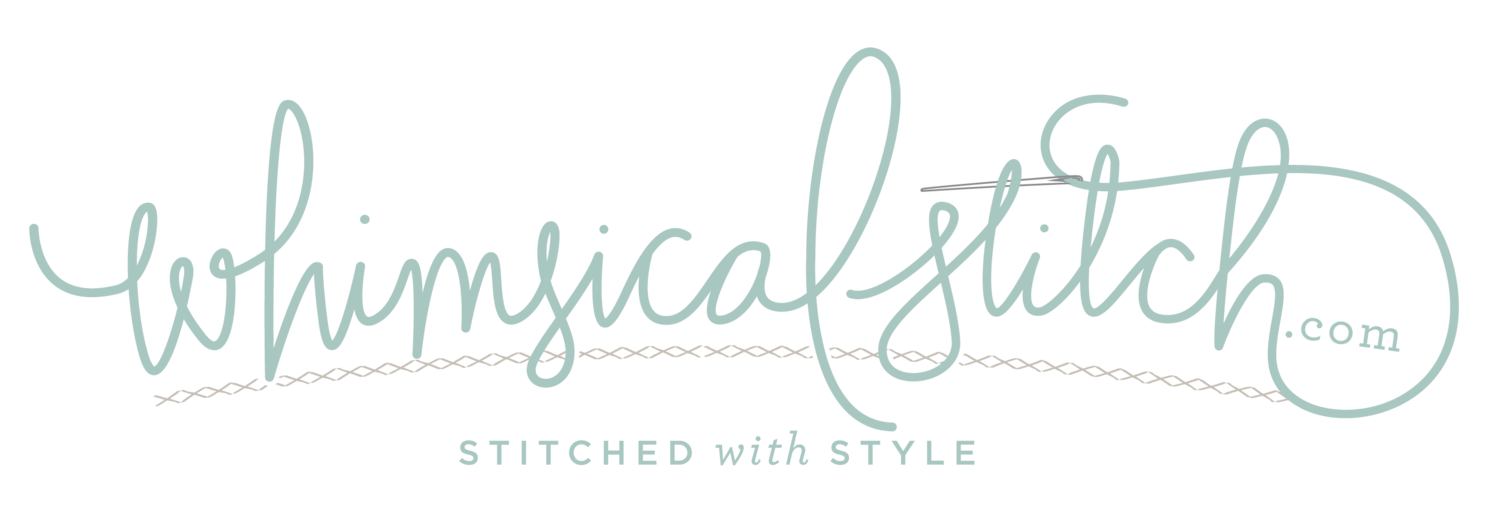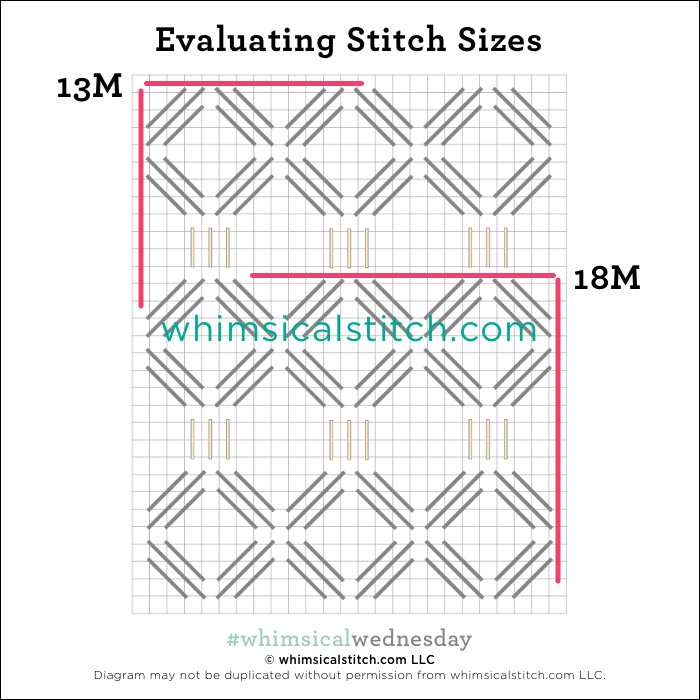All credit for today’s stitch belongs to Marci at The Nimble Needle in Atlanta. And the best part is that she did not stitch the area as I told her to.
The stitched sample previews a darling acorn, part of an upcoming Nimble Needle Acorn Club with canvases by Associated Talents (distributed through Bradley Needlepoint Company). The beaded berries are the starting point of the stitch, as they are stitched precisely as painted. Marci created the beauty surrounding the berries with Mandarin Floss (gray lines), gold Kreinik (black lines), and an adorable Sundance gold star embellishment attached with a size 14/15 bead on 18M.
One note on the diagram. Each of the stitches for the 6X6 crosses (gray lines) is split into two separate stitches, three rows wide or long, to make it easier to add the embellishment and bead in through the center hole.
This stitch will make a spectacular holiday ornament with two shades of Kreinik for the gray and black lines. Ideas for color combos include blue and silver, red and gold, green and red, or white and silver as thought starters. Add the matching metallic bead (gold or silver) and you are set!
If, by chance, you need to dress this stitch down a bit, replace the beads with oblique layered crosses (aqua lines on the diagram to the right).
I hope you have the perfect spot for today’s stitch. Have fun! And happy cocktails! Thank you, Marci. This stitch is amazing.
As you are auditioning stitches (from any stitch source), count the number of canvas threads on the diagram that match your mesh size. And there you have what an inch of the stitch will look like. Evaluate that against the area where you plan to use the stitch and make your final decision. If you start integrating this step into your stitch selection process, you may be surprised at how many stitches you think are large are much smaller than you realize.
By (sometimes) including this step in my own process, I find I am now integrating much longer stitches than I ever thought I would. I used to think a stitch six rows long was super big. I have very much changed my tune, which has helped me expand my creativity, especially for large-space stitches.
Today’s stitch diagram, along with all other #whimsicalwednesday and #smallspacesunday stitch diagrams, can also be found on a Pinterest board here. Be sure to follow whimsicalstitch.com on Facebook, Pinterest, Instagram, and Twitter.
If you like what you see on this blog, there's more. Mary’s Whimsical Stitches is a series of four books offering contemporary how-to collections of more than 200 stitches (in each volume) for all stitchers, regardless of skill level. All books include updated and sequenced diagrams from this blog, plus a collection of all-new stitches from private lessons and other class projects. Visit here to find a needlepoint retailer that carries my books.
New to needlepoint or looking for a refresher? Please download a handy how-to guide covering basic needlepoint stitches and stitch compensation techniques along with new top-line information on needlepoint materials and tools, how to handle threads, and other helpful needlepoint resources.
whimsicalstitch.com also sells Stitch Guides and Stitch Concepts for Melissa Shirley Designs, Zecca Designs, Sandra Gilmore, Purple Palm, Maggie, and Penny MacLeod, and many more. Click here to see the newest guides and click here to see the entire collection.
I hope you have the perfect spot for this stitch! Please enjoy! Have a wonderful #whimsicalwednesday!
A Note about Diagrams
I use color in diagrams to make them as clear as possible. The primary function of different colored lines is to illustrate a stitch sequence. For example, the layering of colors demonstrates you add them in that order. They can also provide ideas on integrating additional threads (one line for each color). Or, you can use the same thread for all color lines. That's where I encourage you to use your imagination for the space you are stitching!





